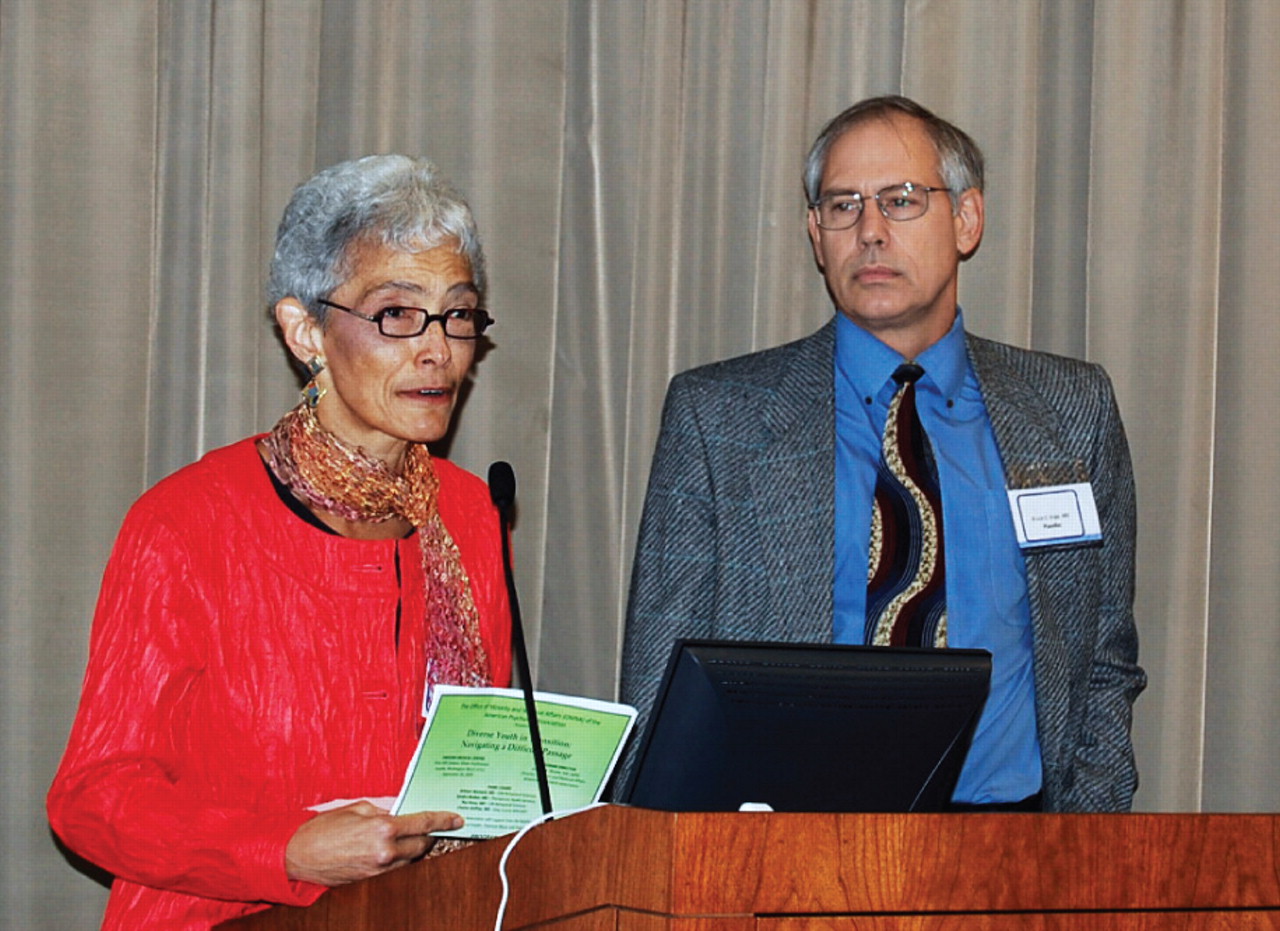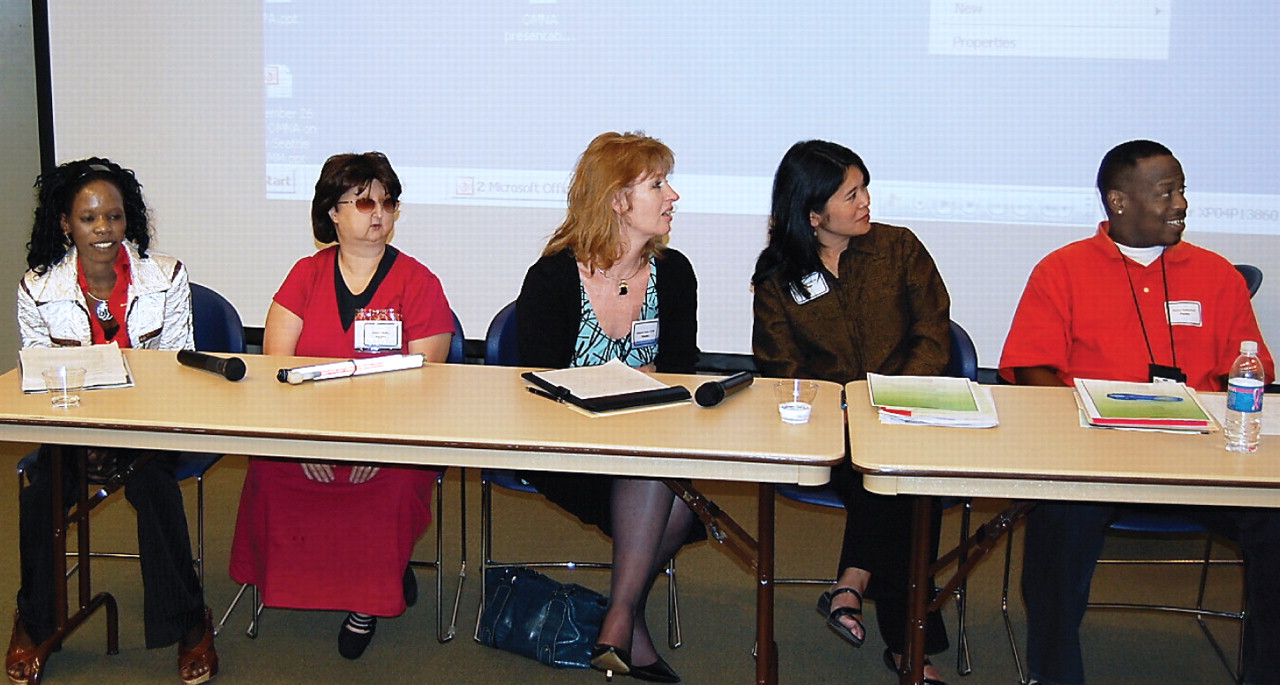Jeanette Barnes has volunteered her time over the years to myriad child mental health endeavors at the local, state, and national levels. She is the founder of A Village Project II, a grassroots enterprise designed to strengthen child/family relations. She is employed as the family liaison for the state of Washington's Division of Behavioral Health and Recovery.
But Barnes, who is of Lakota, Sioux, and Winnebago tribal descent, did not plan this career path—she wanted to be an accountant. Her interest in child mental health stems from another hat she wears: that of mother. The youngest of her three children was diagnosed at age 4 with attention-deficit/hyperactivity disorder (ADHD). By age 11 he was diagnosed with bipolar disorder, and by age 12 with posttraumatic stress disorder (PTSD).
In first grade he was placed in a special-education class, she said, diagnosed with conduct disorder. He stayed on that track through the fifth grade. Next came substance use, followed by gang membership, followed by entry into the juvenile-justice system at age 16 for first-degree robbery.
Barnes said she is convinced that had her son received early in his life a needs-specific, multidisciplinary range of support services and treatment—and not medication-driven care—he might not have found himself locked in a facility for two years where the lack of good mental health care continued.
“Our juvenile-justice system is punitive,” Barnes said in Seattle during an interview with Psychiatric News. “It's not rehabilitation. It doesn't recognize that mental health plays a role in the events leading up to [a child's] incarceration.”
Earlier Intervention Needed
Barnes shared her child's story, what she calls their “life journey,” during the sixth stop in four years of APA's OMNA on Tour in Seattle in September (see
APA Program Works to Reduce MH Disparities). The theme of the meeting was “Diverse Youth in Transition: Navigating a Difficult Passage.”
About 90 people from the Seattle metropolitan area, King County (the jurisdiction the city is in), and around the state attended the multidisciplinary meeting. They included psychiatrists, mental health and other health care professionals; city, county, and state mental health officials; social-service and child-welfare personnel; homeless-shelter workers; and child educators. The eight panel discussions around which the day-long program was designed included former at-risk youth and family members.
The overarching question with which participants wrestled was this: How can children who live in and around Seattle and are at risk of developing a mental illness be identified (and identified early) to prevent them from becoming statistics of the juvenile-justice or adult-correctional systems? And how can youth already in the system be helped to live full and healthful lives in the community?
Speakers at the meeting agreed that undiagnosed and untreated mental health problems such as depression, anxiety, ADHD, oppositional defiant disorder, and PTSD from exposure to life-threatening experiences can lead to poor choices, which can lead to interruption in a child's schooling, which can lead to antisocial behavior such as illicit drug use, crime, and incarceration in a juvenile-delinquency or adult-correctional facility. Such troubled youth may die as victims of crime or suicide. In the meantime, the child's family is typically also under pressure and may experience worry, anxiety, stress, work disruption, and legal costs.
According to the National Conference of State Legislators, “nearly 70 percent of youth in the juvenile justice system have a diagnosable mental health disorder,” said Annelle Primm, M.D., M.P.H., director of OMNA and creator of OMNA on Tour, during her introductory remarks at the meeting. Among these youth, minorities are overrepresented, she said, making up a third of all youth in America but representing more than two-thirds of youth in juvenile correctional facilities.
Youth crime in Seattle is reported as staying constant at around 800 cases a year between 2003 and 2008. While the number doesn't appear to be increasing, the concern is that it is entrenched. Speakers and audience members agreed that to lower the number, education is needed for those who care and are responsible for the welfare of children—parents, guardians, school teachers, social workers, pediatricians, police, judges, and so on—about the immediate and long-term effects that untreated mental illness can have on a child's physical and emotional development.
Wraparound Approach Praised
“We have to build partnerships between the systems that serve our youth and families,” including the juvenile-justice systems, said Barnes.
She said her son, now 29, is still healing but doing well. “He is not in trouble, hasn't been in jail for three years, and he's directing his own care,” she said.
What happened? At age 14, he and his family embarked on a journey of healing with help from a local “wraparound” program. Barnes said it was through this experience that she first became involved in child mental health treatment and advocacy. The intervention offered her child the emotional support, family bonding, survival skills, and sense of physical protection that he needed and that he had previously sought through his gang affiliation.
The wraparound process was one of a number of strategies that received a thumbs up by former at-risk youth and their families at the Seattle meeting. The multidisciplinary intervention almost literally “wraps” a troubled youth and his or her family in supportive care that is culturally sensitive, strength based, needs driven, and collaborative; it's a committed network of medical and mental health professionals, immediate and extended family, peer-to-peer counselors, and an array of other community service providers.
The principles of wraparound have been practiced in various forms for years around the country. Efforts are under way to establish uniform, evidence-based, best-practice standards of care.
Seattle's government is employing some wraparound principles in its Youth Violence Prevention Initiative, a relatively new multimillion-dollar program. City officials hope to reach out to 800 children and adolescents a year who are at risk of developing emotional problems that could lead to violent behavior and a jail sentence. Program staff “will identify these children and surround them with services tailored to their specific needs,” a press statement said.
“Next year's goal is to cut violence in the targeted area by one half,” said Mariko Lockhart, director of the Youth Violence Prevention Initiative.
More information about OMNA on Tour and the Seattle stop is posted at <www.psych.org/share/OMNA/omnaontour.aspx>. More information about wraparound intervention—and the effort funded by the Substance Abuse and Mental Health Services Administration and others to develop standards for it—is posted at <www.rtc.pdx.edu/nwi/>. 


